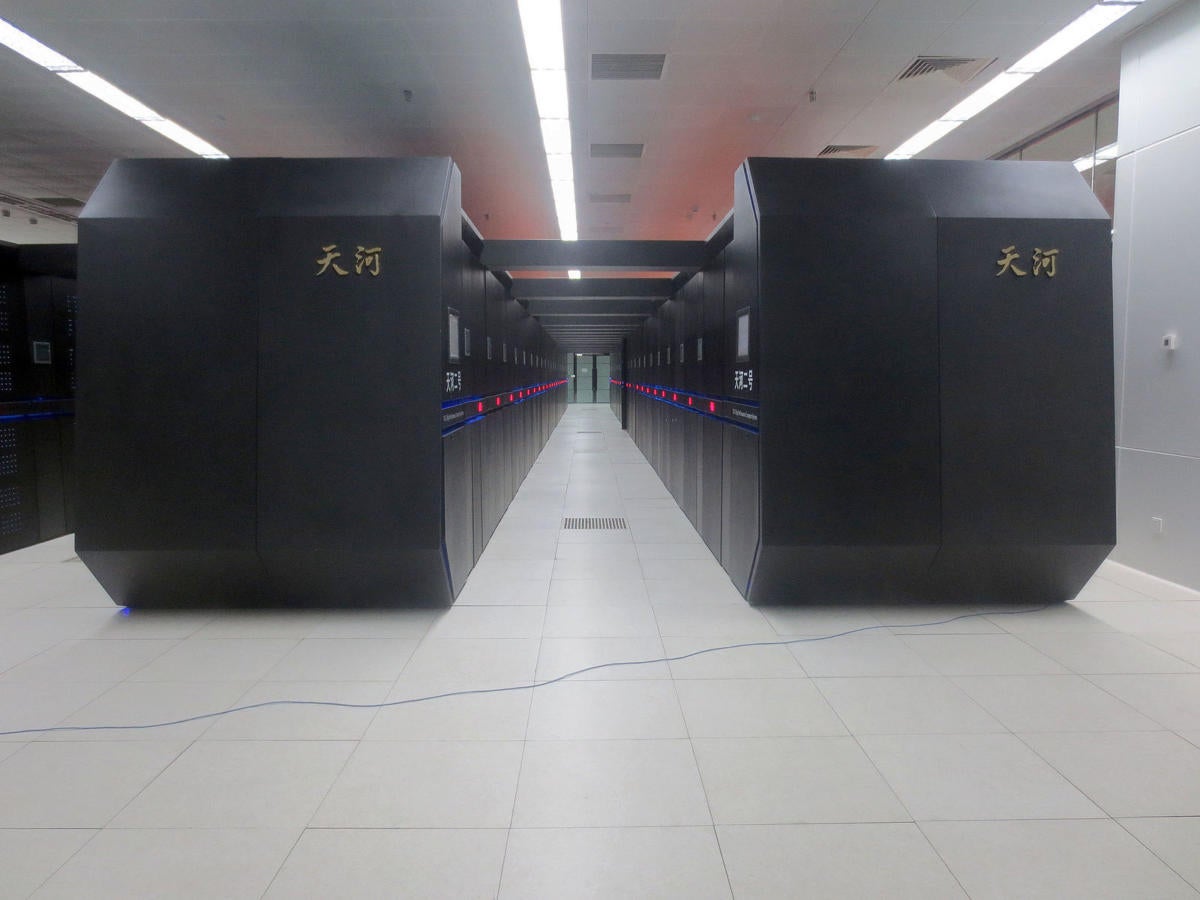China’s policing robot: Cattle prod meets supercomputer
Source: Patrick Thibodeau
 China's fastest supercomputers have some clear goals, namely development of its AI, robotics industries and military capability, says the U.S.
China's fastest supercomputers have some clear goals, namely development of its AI, robotics industries and military capability, says the U.S.
But some of the early iterations of this effort seem a little weird.
China recently deployed what it calls a "security robot" in a Shenzhen airport. It's named AnBot and patrols around the clock. Here's what AnBot looks like, according to a Chinese government newspaper, The People's Daily online. And here is AnBot with its electric cattle prod-like device deployed and operational.
AnBot may seem like a Saturday Night Live prop, but it's far from it. The back end of this "intelligent security robot" is linked to China's Tianhe-2 supercomputer, where it has access to cloud services. AnBot conducts patrols, recognizes threats and has multiple cameras that use facial recognition.
These cloud services give the robots petascale processing power, well beyond onboard processing capabilities in the robot. The supercomputer connection is there "to enhance the intelligent learning capabilities and human-machine interface of these devices," said the U.S.-China Economic and Security Review, in a report released Tuesday that examines that China's autonomous systems development efforts.
The ability of robotics to improve depends, this report said, on the linking of AI, data science and computing technologies.
The report notes that simultaneous development of high-performance computing systems such as the Tianhe-2 and the Sunway TaihuLight supercomputers -- along with robotic mechanical manipulation -- "give AI the potential to unleash smarter robotic devices that are capable of learning as well as integrating inputs from large databases."
Both the Tianhe-2 and Sunway TaihuLight have dominated the rankings of the Top 500 supercomputing list. TaihuLight is currently the world's fastest supercomputer. China is intent on keeping its edge and has plans to deliver an exascale system in 2020, three years before the U.S. One exaflop equals one quintillion calculations per second; a quintillion is 1 followed by 18 zeros.
Major incidents can send service desk processes into disorder. Systems produce the data needed to resolve these incidents, but the challenge is getting that information to the appropriate people fast.
Chinese tech firms are working to learn as much as they can from their U.S. counterparts, particularly in AI development. The government report cited Baidu's founding, in 2011, of its Baidu Silicon Valley AI Lab as one example.
The report recommends that the government increase its own efforts in developing manufacturing technology in critical areas, as well as monitor China's "growing investments in robotics and artificial intelligence companies" in the U.S.
| }
|